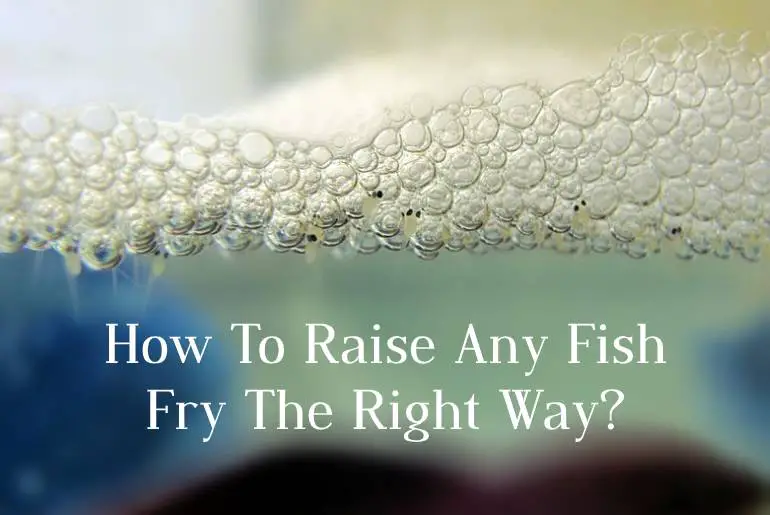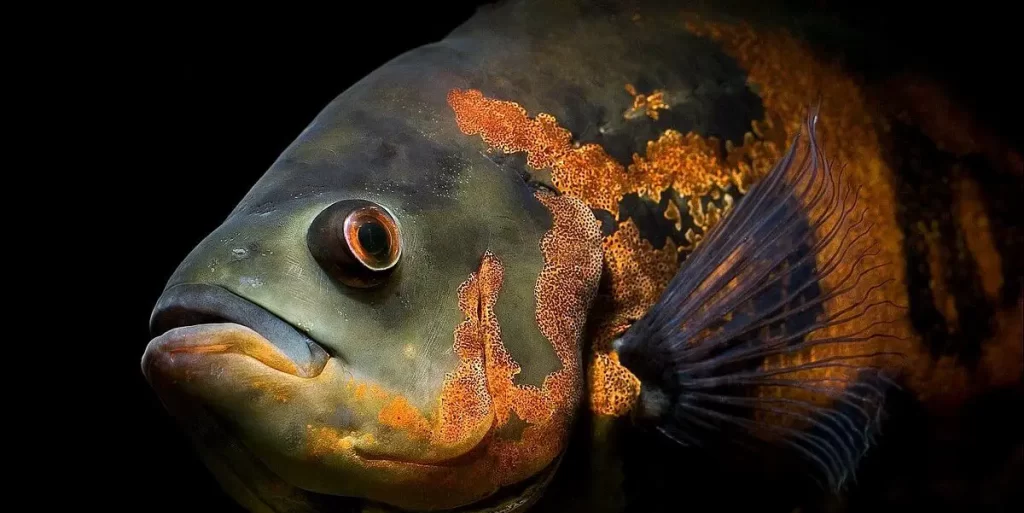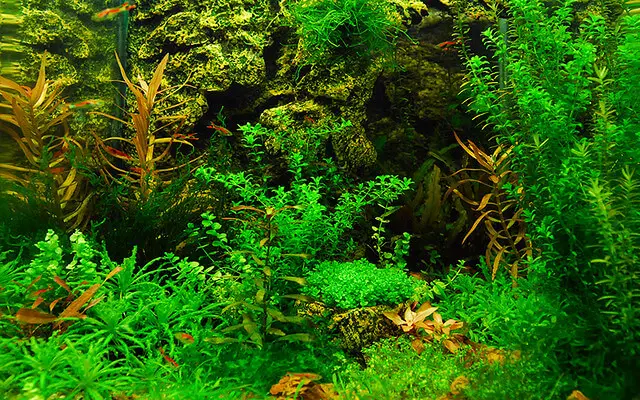It becomes quite a tiring thing when you don’t know what to do after the breeding takes place. The new babies in the tank will raise many questions. How to raise any fish fry the right way? What are the things you need to do to keep the fry safe and alive?
The good health of the fry depends on the health of parents first. Thus, if you want to raise any fish fry the right way, start with the parents. You need to give these newly-born fish the right environment to the right food to help them grow into healthy adults.
But will the above answer be enough to know what to do? Of course not, so let’s go into the details, shall we?
Here is the detailed study for you to raise any fish fry the right way. The to-do and not-to-do things for these fries are written below, therefore read it carefully and don’t mess it up.
How To Raise Fish Fry The Right Way?
The first thing you need to realize while raising any fish fry is 70% of them will die. Whatever you do, how careful you are, even with the ideal conditions, some of them will die.
So, don’t dishearten yourself when all of the fries don’t reach maturity and makeup to your adult tank.
Now coming to the main point here, how to raise them the right way? There are certain ways to ensure you are doing right by the fry. These are very simple things you need to do.
Every baby, whether it is of human or fish, is delicate and sensitive to changes in the tank. They ask for ideal parameters and very few things to be done for their safety.
You can’t leave it to parents when it comes to raising a fish in the tank. It has to be you who will be doing all the things for both parents and new babies.
The first thing you need to is separate the parents after the breeding process is complete. Also, make sure there is no big fish present in the tank that can eat up these small babies.
Likewise, the before and after breeding phase and its completely different dynamics need to be learned and applies for these babies’ safety.
You need to learn to take care of fish fry well to raise them properly. Care and attention with utmost delicacy are what you need to give to them for proper development.
How Can You Take Care Of Fish Fry To Raise It Successfully?
As we discussed above, you know it is important to take care of fish fry properly. But how can you take care of them?
You start simple when it comes to taking care, go slow here. Likewise, be precise and careful with every step you take keeping in mind how delicate small fish can be.
You need to aware and attentive with the adult fish in the tank, think how careful you’ll have to be with the small ones.
Here are a few steps to take care of the fish fry with correct precautions.
Breeding Environment For The Aquarium Fish
One of the major factors that affect the baby is the environment they are born to. Even before they are born, the environment decides whether they will live or not.
Thus, the first step to raise the fry is to give them the ideal environment to born. You need to set up the fry tank or breeding tank separately for the fish.
In the normal tank or the community tank, there are fish that can mistakenly or intentionally feed on the eggs or even fry.
Hence, to keep them safe from predators, you need to transfer both male and female species to another tank.
You need to research the type of fish you have and the breeding tank requirement. Some fish mate before the breeding takes place, some male tries to impress females in the breeding tank, some can even eat their egg.
There are few easiest fish to breed in a home aquarium whilst most fish breeding can be a nightmare. So, research everything about your fish species and their breeding requirement. Also, look for the tank requirement they need while breeding.
The temperature, water quality, diet, etc. are slightly different in the breeding tank. That’s why you need to be careful with it.
Although there is one thing common among all fish, they need space to breed in so make sure you get a tank spacious enough.
Where Can You Keep Your Fish Fry?
It is very necessary to give fry what they ask for. First of all, they need space to grow and that space needs to have certain parameters.
Without risking the health of parents, you need to separate them from their babies as soon as the fry starts acting independently.
Adult fish move their babies from one place to another to protect them. The paternal instinct even causes both males and females to fight with each other.
Both can be protective yet can eat up their babies mistakenly thinking of them as their food. So, the first measure to take is to move the adult fish away from their babies into another tank.
Fish fry has a very weak or say immature immune system making themselves susceptible to any kind of disease. So, it is better to move the adult away rather than babies.
They are more likely to die if the environment they live in isn’t well-filtered or well-maintained. Make sure to give them good water to swim and grow in.
I have also written an article on The Easiest Way to Set up a Fry Tank: New Born Fry Care
Tank Requirements For Breeding The Fish
Every fish asks for different tank requirements but the tank size is the common link among them. If you want to raise your fish fry to grow healthy and active, you need to provide the space to swim around.
They need to be away from every big fish as some fish will see them as delicious snacks. Even the herbivore fish gets tempted sometimes to feed on new babies.
There is also a chance of being injured with all the chasing and running away from the bullying fish. Thus, the result is not positive here, injured babies are more likely to die.
Moreover, these injured babies even when growing into adults are more susceptible to diseases. So, the first step is giving fry their fry tank.
Water Quality In The Fry Tank
Water quality plays a vital role to decide whether your fish will live or not. These small babies are very sensitive to water quality fluctuation. So, never use tap water in the aquarium with fish fry.
Ammonia and nitrite present can cause ammonia poisoning in the aquarium. And this will eventually become the death of your fish, so make sure they are always zero.
You need to clean the aquarium water and change it time and often so that the ammonia and nitrite level remains zero.
But you need to be careful as too much water change in the aquarium is harmful to your fish as well as their fry.
You can go for filters to help you clean the water from impurities as well as create the water flow in the tank. Make sure to go for filters that don’t create suction which can be deadly for fry.
AQUANEAT 4 and AQUANEAT are two best sponge filters you can get for your fry tank. These filters have both biological as well as mechanical filter media that will keep the aquarium clean and pollutant-free.
To other preferences, you need to look up your fish type, some fish prefer soft and some prefer hard. That’s why you need to look up and know how to maintain the aquarium water hardness as your fish prefer.
You need to know what pH your fish prefers and how to adjust the pH of the aquarium water accordingly. Therefore, be sure to do your research well.
Temperature For Fish Fry In The Aquarium
Most of the tropical fish fry prefer the temperature around or between 76 to 80 degrees Fahrenheit, hence warmer water.
But there are also fish like koi and goldfish that prefer slightly cooler water. And the best solution to this problem is getting a thermometer and aquarium heater.
If you want your fish to grow properly without being fried in the tank or freeze into dead fish fry then it is a necessary step to take.
A submersible heater is the best option for your fish tank and necessary to get it as soon as your fish is pregnant.
Aeration For Fish Fry In The Aquarium
Aeration is necessary for the fish fry to breathe properly and have sufficient oxygen supply and surface agitation in the aquarium.
But nothing more than the limit is good, so you need to keep on checking the aeration as churning water can be very dangerous and risky for these small babies.
Light In The Fish Fry Tank
Your fry needs plants to hide and small planktons to feed on when you are absent to provide food. Likewise, plants need light to grow in the tank environment.
The light, although are for plants to keep them away from decaying and dying, is also important to fish fry.
You need to go for the low light aquarium plants to give natural environment for your fish fry to hide and grow.
Fish fry in the tank with moderate lighting is active as well as safe from infectious disease. Darkness welcomes harmful bacteria in the tank and light helps to keep them away.
NICREW Classic LED Aquarium Light provides moderate lighting with 11-watt wattage and is highly recommended for your fish fry tank.
Calcium Levels In The Fish Fry Tank
Calcium level is obtained from the water these babies are swimming in. It is one of the important for the fish to grow and act as important nutrients to raise them. Even shrimps need calcium to make their shell stronger and grow properly.
That’s why the calcium level should always be at or close to 20 ppm (parts per million).
How Can You Grow Your Fish Fry Faster?
As already stated, the fish fry is fragile and delicate. The slightest mistake can kill them opposite to your wish to raise them.
How will you raise a fish when it is not even alive? Thus, take baby steps and learn every process.
If you want your fish fry to grow faster, here are a few things you can do:
- Provide them high energy yet balanced food.
- Always make sure there is clean water in the tank.
- Maintain the temperature they ask for.
- Provide enough lighting for both plants and fish fry but don’t overdo it.
- Give them enough space to swim around without any adult fish on the premises.
- Do not keep them in an environment where they can be stressed and scared.
How Long Should You Wait Before Feeding Fish Fry?
It is normal to get excited as well as worried to feed the fish fry sooner. But patience is the key here.
Most tropical fish are born with yolk sac so it is not necessary to feed them for a while, so don’t pollute water by dropping foods for them.
With most of the fish, they need time to adjust to the environment they are born to. They don’t go hazardously feeding on something.
You need to wait at least twenty-four hours before you feed them anything. It is wise to wait for a little longer rather than jumping to the conclusions of feeding them right away.
If you want your fish fry to grow healthy and strong, please do not rush for things. Rushing will do more harm than good. Patience is the key here.
How Often Should You Feed Fish Fry?
Fish babies are very small and growing so they need more nutrients than adult fish. You need to feed them more often to keep them healthy and well-fed.
The ideal rule to feed them is four times to six times a day but in a very small quantity that they can finish. It is very necessary to feed them at least 4 times a day within certain intervals.
Look at the fish food details and instructions and feed them accordingly. Don’t let the aquarium water get cloudy and foamy with all the remaining food resulting from overfeeding.
Overfeeding also brings obesity in the aquarium fish, and this nutritional disease is a curse for every fish keepers.
Overfeeding or underfeeding acts like a barrier for your fish fry to grow and can hinder your process of raising them. Be careful with them
What Are The Foods You Need To Raise Fish Fry?
There are a few things you need to make sure your fry is getting. They need more food than adults as they are growing fast.
Most of the fish that are originally from the tropical region are born with a yolk sac. This yolk sac will provide the nutrients for the first few days after hatching.
These fish babies often feed on small particles like zooplankton, algae, etc. in their natural habitat. Sponge filter often houses tiny organisms, zooplanktons, that can act as food for your aquarium fry. Also, there are many other fish foods you can feed to your fry.
It is easy for you to go for the liquid form of food that comes in the tube and is best for your fish fry.
Infusoria is one of the best fish foods you can get for your fish fry along with the brine shrimp.
If it is taking quite a time for foods to get delivered, you can go for hen’s egg yolk. Drop few drops of egg yolk into the water for your fish fry to feed on.
Also, when they grow a little more, you can switch to other foods. One of the foods that cover most species is ground-flakes.
Likewise, for the herbivore fish, you can go for algae discs, and for the carnivore, you can feed them sausages attached in the strings so that it is easier for the fish fry to eat it.
Frequently Asked Questions
Here are few most asked questions related to the fish fry and their growth in the tank.
Will Baby Fish Survive In My Tank?
As long as you provide them the ideal tank condition that they ask for, your baby fish will survive in the tank. But remember to keep them separate from the adult and predator fish.
What Should I Do If My Fish Has Babies?
First of all, don’t panic and set up a breeding tank for them when you see the female is pregnant. Keep both males and females in the breeding tank till fertilization and remove them once the fry is independent.
Make the tank condition ideal for fish to grow into a healthy adult. The best way to set up the fry tank is to follow and read the instructions carefully.
Here is the article to help you set the fry tank: The Easiest Way to Set up a Fry Tank: New Born Fry Care
How Do You Know When Your Fish Is Having Babies?
The female, which will be easier to distinguish in this stage, will have a rounder belly and grow a bulge on the back of the abdomen.
They also look for their mates and show mating signs, that’s why you need to be attentive here.
Conclusion
In conclusion, you need to remember that the fry is a delicate being and have to be very careful about it too. Give the parents the right environment to breed and the fry to grow. You need to look at the temperature, water quality, diet, every little detail that fry asks for. If you are able to make ideal conditions in the fry tank, you’ll have no problem raising your fish. They will grow into a healthy adult and will live longer if you maintain the same level of care.






